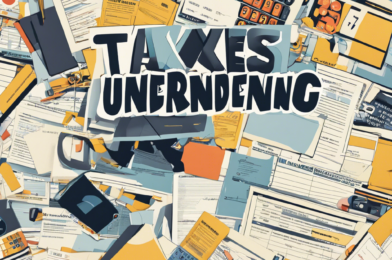With rising costs and an uncertain economic outlook, many of us are looking for ways to save money and make our dollars stretch further. Thankfully, there are a number of great apps available that can help us do just that. In this article, we’ll explore some of the most popular and effective money-saving apps that can help you keep track of your finances and achieve your financial goals.
One of the most well-known and trusted money-saving apps is Mint. This comprehensive platform allows you to create a personalized budget, track your spending, and receive bill payment reminders. Mint also offers free credit score monitoring and provides tailored tips to help lower your credit card interest rates. By connecting your bank accounts, Mint provides a holistic view of your finances and spending habits, enabling you to make more informed decisions about your money.
If you’re looking for an app that focuses on investing and growing your wealth, Acorns is a great option. This micro-investing app rounds up your everyday purchases to the nearest dollar and invests the difference in a diversified portfolio of stocks and bonds. Over time, this spare change can add up and, with compound interest, can grow into a substantial sum. Acorns also offers a traditional brokerage account and IRA options, making it a versatile tool for building your investment portfolio.
For those seeking a more hands-on approach to budgeting and expense tracking, YNAB (You Need a Budget) is an excellent choice. This app helps you allocate your income deliberately, ensuring that every dollar has a purpose. YNAB encourages users to adopt a broken-down, intentional approach to budgeting, enabling them to gain control over their spending and saving habits. The app also provides educational resources and a supportive community to help users achieve their financial aspirations.
Sometimes, saving money can be as simple as finding better deals and prices on the things you already buy. This is where coupon apps like Rakuten (formerly Ebates) come in handy. Rakuten allows users to earn cashback on their online purchases at thousands of retailers, including major brands and stores. It’s an easy way to save money on everyday expenses, and the cashback can really add up over time.
In addition to these, there are a plethora of other money-saving apps available, each with its own unique features and benefits. Whether you’re looking for help with budgeting, investing, or just finding the best deals, there’s an app that can help you achieve your financial goals. Exploring these tools can empower you to take control of your financial future and make your money work harder for you.
Another great app to help you save money on your groceries is Ibotta. This cashback app gives you rebates after you have made a purchase, as long as you upload your receipt or link a loyalty card. There are also in-app bonuses and rebates that can be earned by buying from specific retailers. Ibotta also allows you to transfer your cashback to apps like Venmo and PayPal, or you can choose to receive gift cards to various retailers instead.
For those who are looking for a more comprehensive financial management app, Albert could be a good choice. By connecting to your bank accounts, this app offers a full view of your financial situation. Albert also provides a variety of other features, such as no-fee checking accounts, expert financial advice, and micro-investing. The app will also analyze your spending habits and income to offer personalized recommendations and insights to help you meet your goals.
If you are specifically looking to save money on dining out, Groupon can be a useful app. It offers a wide range of deals, including discounts of up to 50% off at restaurants. The app also provides deals on local attractions and activities, making it ideal for those who like to explore their city on a budget. Additionally, Groupon offers deals on travel, goods, and online courses, making it a versatile money-saving tool.
Another great way to save money on your online purchases is with the Honey app and browser extension. When you shop at one of their supported retailers, Honey will automatically apply coupon codes to your order to ensure you get the best price. The extension also allows you to earn and redeem rewards, which can be used to save money on future purchases. The more you shop, the more rewards you can earn, making it a great way to save money over time.
For those who prefer to do their own investing, Robinhood is a popular commission-free trading app. Users can invest in stocks, funds, and even cryptocurrencies without paying any fees. Robinhood also offers a Cash Management account that provides a debit card and bill pay features. This account also offers a competitive interest rate, allowing you to earn more on your uninvested cash. Whether you are new to investing or an experienced trader, Robinhood makes it easy and accessible.
If you are looking to save money on your gas expenses, GasBuddy can be a helpful app. This tool helps you find the cheapest gas in your area, ensuring that you never overpay when you fill up. GasBuddy is community-driven, with users reporting gas prices to help keep the information accurate and up-to-date. The app also offers a rewards program where you can earn points for reporting gas prices and writing reviews. These points can then be redeemed for free gas cards.
For those who want to save money while still giving to charity, there’s the Charity Miles app. This unique app allows you to earn money for charities just by walking, running, or biking. You simply choose a charity and then track your movement with the app. Charity Miles will then make a donation on your behalf, based on the distance you’ve covered. This is a great way to stay active and give back at the same time.
Finally, for those who want to save on their prescription medications, there’s the GoodRx app. This app provides users with coupons and discounts that can be used at most pharmacies nationwide. GoodRx can help you find the lowest prices on your prescriptions, saving you money each time you fill a prescription. The app is easy to use and can help you save a significant amount, especially if you have regular medications.
With so many money-saving apps available, it’s easier than ever to take control of your finances and make your money go further. Whether you’re looking to budget better, invest wisely, or just find the best deals, there’s an app that can help. So why wait? Start exploring these tools today and see how much you can save!









